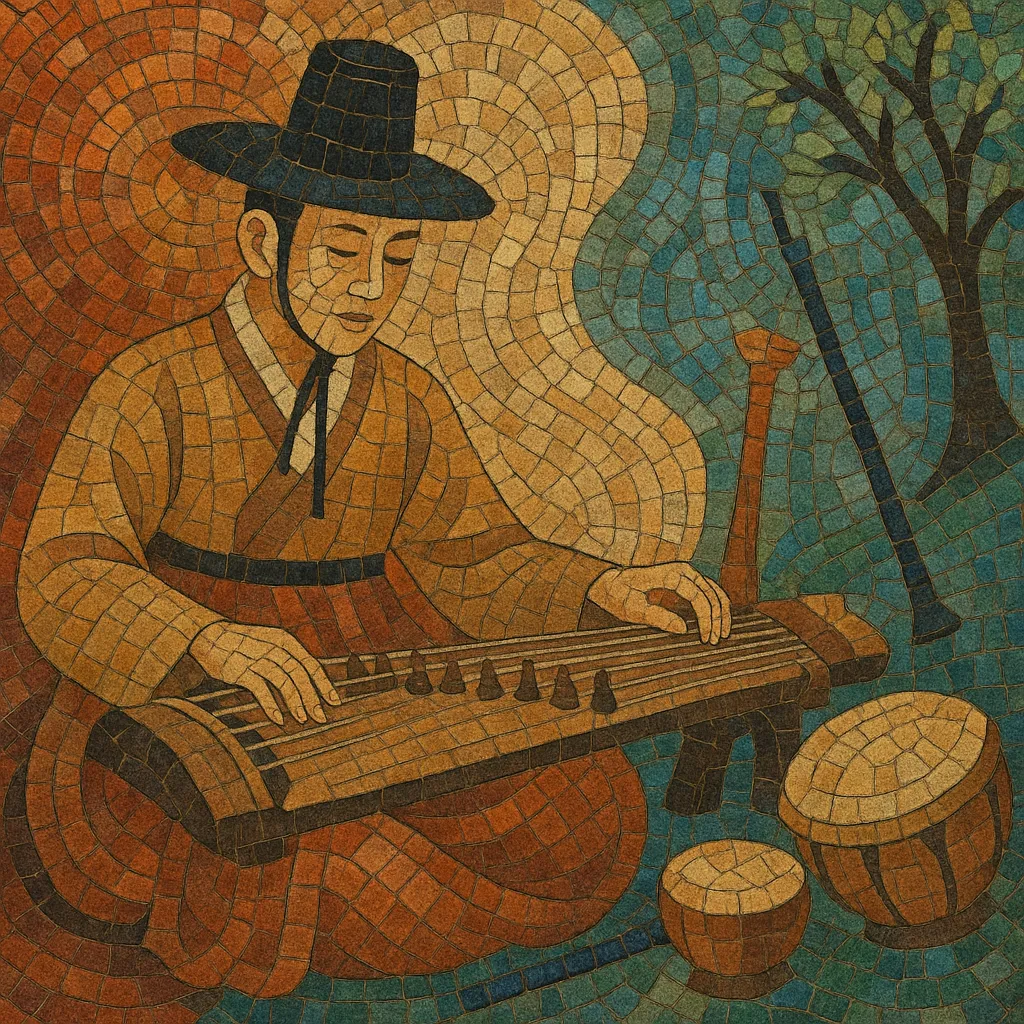
Korean classical (gugak jeongak) refers to the refined court, literati, and ritual traditions of the Korean peninsula, centered on the Joseon-era repertories. It encompasses Confucian ritual music (aak), suites and chamber genres (such as Yeongsanhoesang), and aristocratic vocal song forms like gagok, gasa, and sijo.
The style is characterized by heterophonic textures, long-breathed melodies, and nuanced pitch inflections (sigimsae). Rhythmic organization relies on cyclic patterns (jangdan) and a carefully shaped sense of elasticity and breath. Typical instruments include gayageum and geomungo (zither-lutes), haegeum (two-string fiddle), daegeum/junggeum/sogeum (transverse bamboo flutes), piri (double-reed), ajaeng (bowed zither), and percussion such as janggu and buk.
Modal language draws on systems such as ujo and gyemyeonjo, with pitch centers and ornamental idioms that privilege timbre, contour, and expressive microtonal shading over functional harmony.
Korean classical crystallized during the Joseon dynasty, when court and literati repertories were formalized and supported by state institutions. While indigenous practices (hyangak) predate Joseon, a major catalyst was the importation and adaptation of Confucian ritual music (aak) from Song China. This ritual tradition took root in state rites such as the Jongmyo ancestral shrine ceremonies.
In the 15th century, King Sejong’s court introduced jeongganbo, a unique mensural notation that precisely encodes rhythm and pitch duration. The aesthetic ideals emphasized elegance (pungnyu), moderation, and subtle expression, favoring long melodic lines, controlled vibrato, and refined ensemble blend. Chamber ensembles (samhyeon-yukgak traditions) balanced strings, winds, and percussion, shaping the core sound world of jeongak.
Aristocratic vocal forms—gagok (lyric song cycles), gasa (narrative lyric), and sijo (compressed poetic song)—emerged as pillars of Korean classical singing. These genres align poetry, breath, and melody with modal coloration (ujo/gyemyeonjo) and meticulous ornamentation (sigimsae), and are preserved today as Important Intangible Cultural Properties.
By the late Joseon period, boundaries between court, literati, and popular traditions grew more porous. While new narrative and instrumental forms (e.g., pansori, later sanjo) developed outside the court, they interacted with classical modes, instruments, and aesthetics. In the 20th century, institutions such as the National Gugak Center systematized pedagogy and performance practice, sustaining ritual ensembles, court suites like Yeongsanhoesang, and vocal classical repertoires.
Modern composers and performers have expanded the language of Korean classical through concert works and intercultural projects, while preservation societies maintain historically grounded practice. Today, the genre thrives both as a living heritage—performed at ritual sites and concert halls—and as a flexible platform for new composition (changjak gugak) and fusion.

